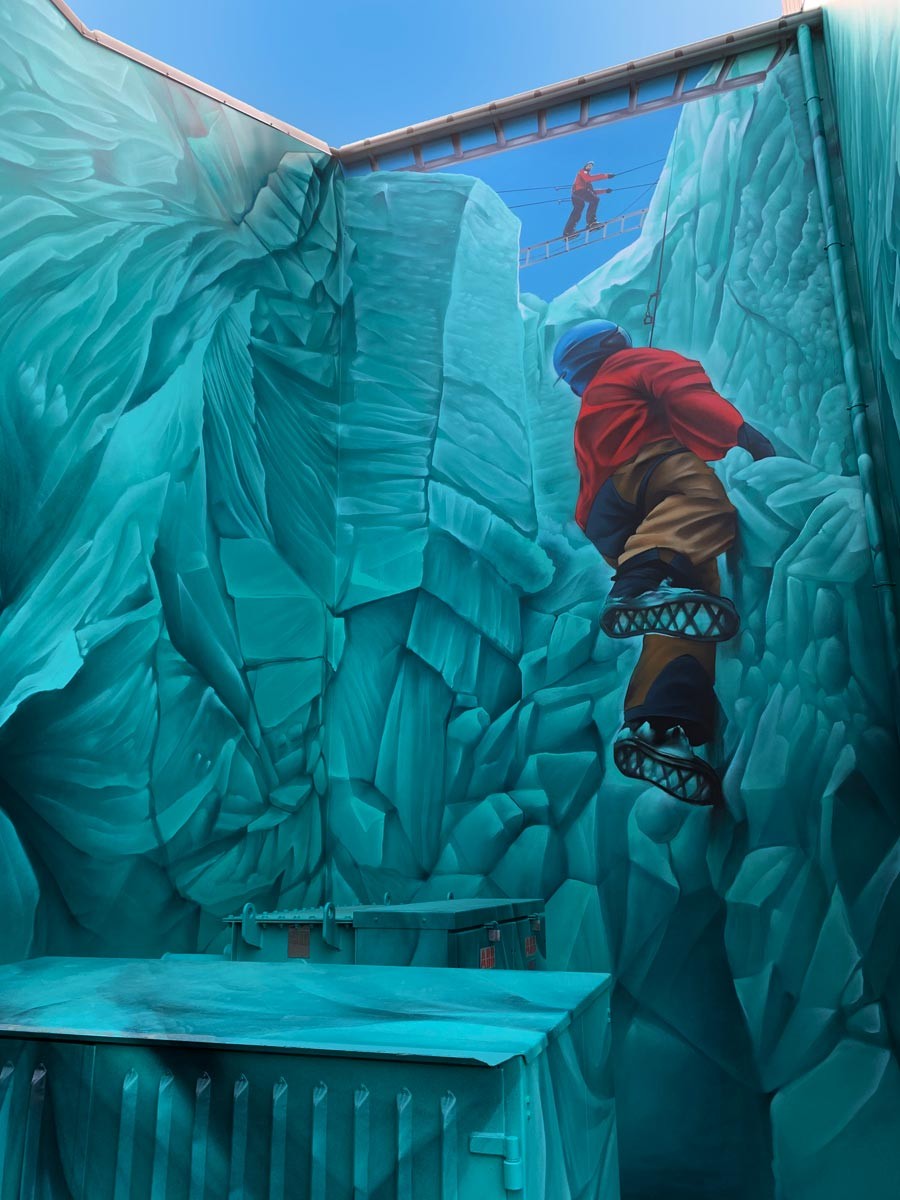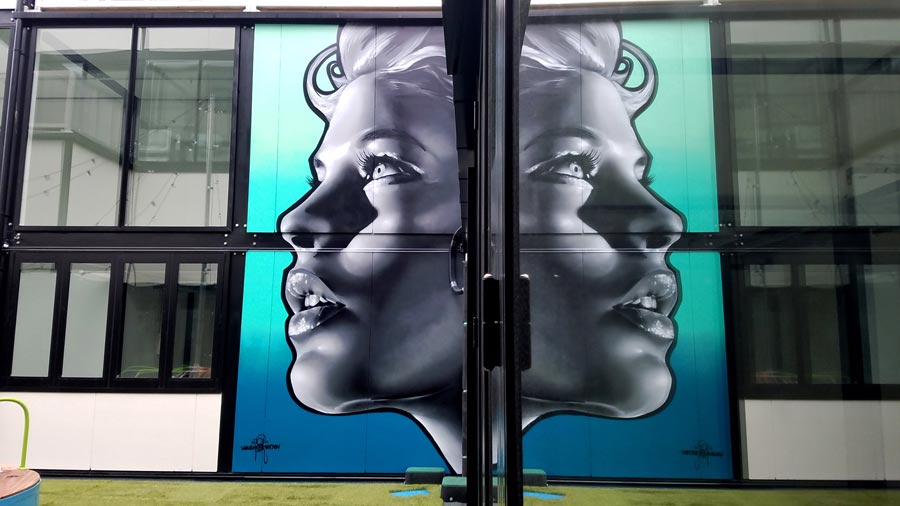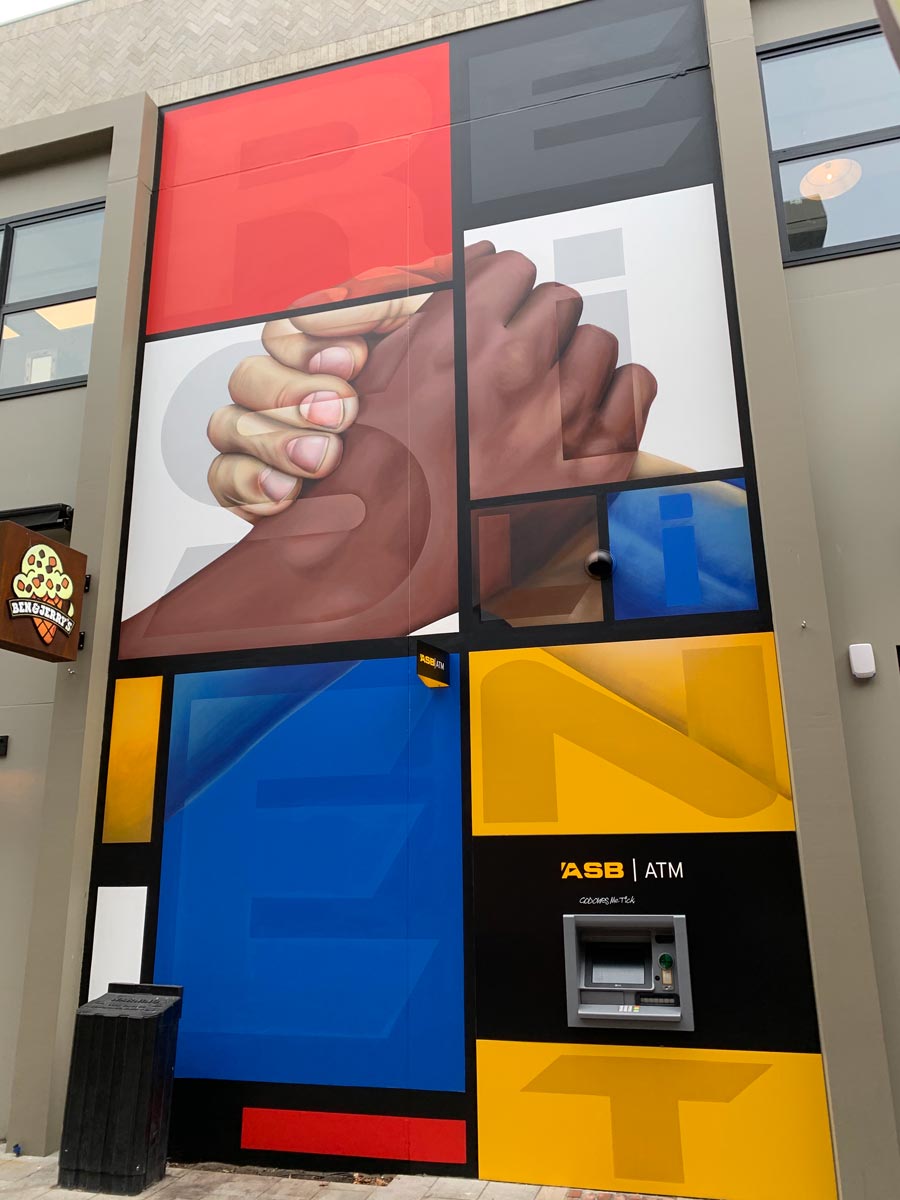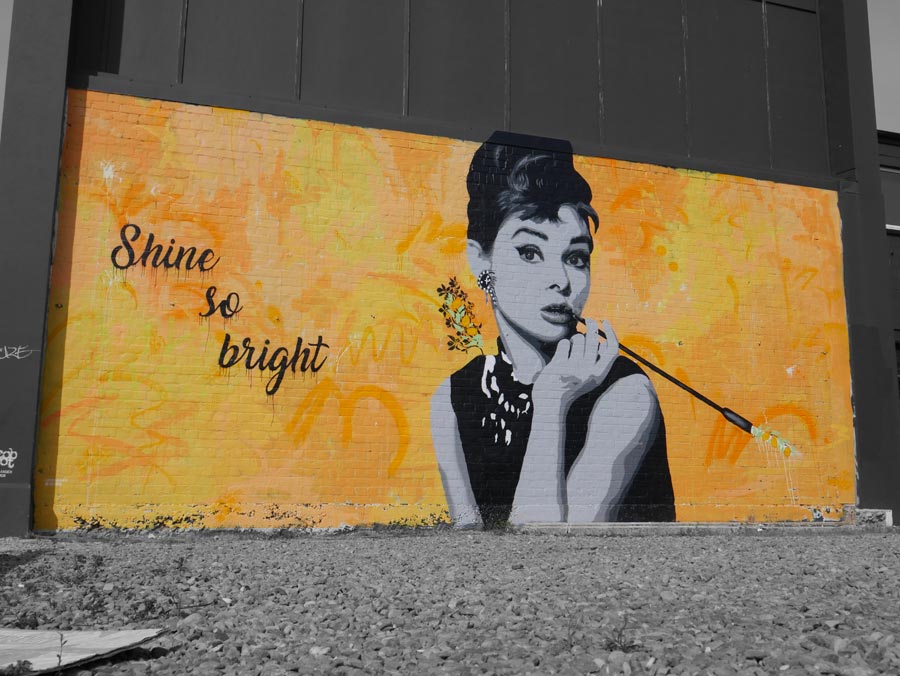Getting up: Street art in Christchurch
The depictions on Christchurch’s exterior walls are a massive part of the city’s post-quake identity. What's Hot New Zealand talks to a few of the artists who have marked our streets and watched the city evolve.
Christchurch’s rejuvenated inner city has become one of the world’s best canvases for street art. Pulling a positive out of the dramatic and earthquake-forced transformation of the city landscape, the resulting abundance of large-scale art has made Ōtautahi a gigantic outdoor gallery that’s crammed with photo ops. And it’s not just random tagging, either. The city’s transformation of blank walls into stunning works of art has featured a veritable roll call of world-renowned street artists alongside local legends and urban creatives from around Aotearoa.
GEORGE SHAW
George, originally from the UK and having come to Christchurch via Nelson, is one of the masterminds behind street art organiser and commissioner Oi YOU!
How is the Christchurch art scene different now from how it was ten years ago? The property developers are seeing there’s an advantage to having beautiful murals around the city, because it brings people in.
How does Oi YOU! work? Where my skills lie is in the organisational and design side. We work very closely with the artists in the city, like Dcypher and Jacob Yikes. For example, the Riverside mural: the idea came from looking at the wall and thinking about what could go there. Then we talk to the artists.
How did that mural come together? The Riverside mural is an interpretation of a Mondrian painting. I saw the ASB cash dispenser in the bottom right corner of the wall. We couldn’t move that, so we used it as inspiration. We wanted to use that word, ‘resilient’, and the clasped hands show the unity that the city has shown over the last few years. Dcypher and I designed it, then he did the art – I put a bit of block colour on the wall, but Dcypher’s got the technical and artistic skills.
Tell us about some street art that’s inspired you. I think my favourite piece is one from the first Spectrum festival, the Tilt mouths on the back of the casino. I also love [Owen Dippie’s] Ballerina and I love the SALT mural. The Rone piece is just gorgeous, the one on the brick wall. We placed that for one of our first events and I still adore it.
Read our full Q&A with George here.
Joel Hart
Joel is a Christchurch graphic designer and urban artist with a proclivity for creating art around the themes of beauty and decay.
What are the inspirations for your art pieces featuring faces? A lot of what I paint has been influenced from my past work in graphic design and commercial art. I fuse a lot of found photographic elements of texture, shapes, patterns from all things that I am interested in like architecture, design, typography, nature, sports and urban decay, usually collaged together around a human form, that again is collaged together from a mixture of different sources.
Talk us through the piece you’ve done in Christchurch that you love the most. One piece I am really fond of is a piece out in Kaiapoi, just over the railway tracks. I really enjoyed working on this piece.
How did you get into creating street art? I was always into drawing as long as I can remember. The style and nature of my work now lends itself to going large. It just came out of wanting to challenge myself to paint larger and larger, really.
Read our full Q&A with Joel here.
Wongi 'Freak' Wilson
Wongi Wilson is a street artist with a reputation for high-quality, large-scale works in prominent positions around Christchurch. He’s a member of the prolific DTR street art crew.
What motivates DTR? Our motivations have changed over the years but for nearly 15 years we've pushed graffiti art productions.
How did you get into creating street art? It started as an interest in the subculture and trying to mimic what I'd seen in magazines, documentaries and movies. Along the way there were a few opportunities to develop, namely through Project Legit but besides that, it was self-motivation.
Tell us about a piece of street art that’s inspired you. The internet wasn't what it is now, even in the mid 2000s, and magazines and books were the main source. I first saw Maclaim Crew in The Source magazine and it blew my mind to see you could use spray paint to create artworks that looked like a photo. I couldn't pick just one work but I've been hugely influenced by Tasso Maclaim and Case Maclaim.
What's the piece you’ve done in Christchurch that you love the most? My favourite piece is of my friend who passed away, the whole crew painted a production in his memory and I painted his portrait. It's in the city on Pilgrim Place, best viewed up close but visible from the Colombo Street bridge.
Read our full Q&A with Wongi here.
Dcypher
Another DTR mainstay, Dcypher cut his teeth in Canterbury before spending a decade in Los Angeles working as a freelance artist and developing mural art for TV shows like Sons of Anarchy, Silicon Valley and NCIS.
How did you come up with the name Dcypher? The name came about when I was a teenager. It’s super cliché in hindsight, but once you’ve chosen a name you kinda have to stick to it. Graffiti can be difficult to decipher to the general public so at the time it felt like a good fit.
Tell us about a piece of street art that’s inspired you. There wasn’t a lot of murals, graffiti or street art up in the beginning that was massively inspiring to me, but being a dedicated skateboarder for half my life I was heavily influenced by skateboard graphics. Although, there were a few really talented German graffiti artists that visited Christchurch in the early 2000s that definitely gave me a very different perspective of how far the art of graffiti could be developed in style and technique.
How does your process work? There are obviously different levels and forms of creating graffiti and street art legally or illegally, but from a commercial perspective the process of developing an artwork always varies from client to client. The client usually has input into the design’s outcome. I’ll create a mock-up of what the artwork will look like for the proposed wall, that's it in a nutshell. I won't go into the unsanctioned side of things, although that is a huge part of my development and freedom as an artist over the years.
Talk us through the piece you’ve done in Christchurch that you love the most. The latest piece that DTR painted as a crew in the South Frame would be my favourite wall this year. It’s a timeline depicting the development of graffiti and street art with influences of the last four decades as markers of time.
Read our full Q&A with Dcypher here.
Jacob Root
A relative newcomer to the Christchurch street art scene, Jacob Root uses stencils, screens, acrylics and aerosols to create works from small canvases to huge murals.
Why Audrey? The Audrey Hepburn mural I designed to bring a bit of colour pop and inspiration to the corner of St Asaph Street and Manchester Street. I wanted to paint Audrey as she is a well-known figure in history, known for her glamour, acting, and what stuck out to me is that she was a major humanitarian. She was out to help improve the welfare and general happiness of people. I found that this made her really fitting for the subject of my mural because I really love to try inspire people to be happy, keep their heads up and ‘shine so bright’.
How did you get into creating street art? When I was 17, I was really into graphic design and all of that but the thought of office work was pulling me away from it. Later that year I went on a family holiday to Los Angeles where I saw street art and amazing galleries everywhere, which inspired me to have a go at it when I got back home.
What was the first bit of street art you created? The first piece of street art I made was a single-layered stencil of Han Solo on a tiny electricity box on the corner of Madras Street and Edgeware Road. It was awful. I went back a few months later after I'd gotten better and painted Marilyn Monroe which is still there today.
Read our full Q&A with Jacob Root here.
Jacob Yikes
Another part of the DTR puzzle, Christchurch-based illustrator Jacob Yikes is a staple of the city’s street art scene. He also illustrates and paints in his home studio.
How did you get into creating street art? I grew up painting graffiti and have always been into art as a kid. I began painting large works after the earthquakes in 2011 due to the high level of spots and walls to paint.
Tell us about a piece of street art that’s inspired you. That’s a tricky one, I wouldn’t say looking at street art inspires me to paint it, to be honest. My good friend and crew mate Dcypher has always inspired me though, as he is constantly taking it to another level and is just a boss in general.
How does your process work? For works that are not commissioned I generally just find a spot and suss out whether it can be painted without any problems. Then I pretty much just freestyle whatever is in my head at the time. It’s different for larger walls or commissioned pieces, in which I usually come up with a concept.
Talk us through the piece you’ve done in Christchurch that you love the most. Perhaps the Alice in Videoland wall. I have switched up my style over the last wee while and have been working in my studio more than the street, but I have some big works lined up for the new year that are a lot different from my older ones and I like the direction they are heading. I’m my own biggest critic.
Read our full Q&A with Jacob Yikes here.
Rone
Melbourne artist Rone’s Worcester Street artwork on Cathedral Junction is one of our faves.
What inspired the work? I wanted the raw brick to blend with Teresa Oman’s beauty. To show a contrast of beauty and decay. The fern is a nod to New Zealand’s history.
How does your process work? I invented a method for doing huge works that I have since shared with other artists. I call it the ‘overlay method’. I overlay my design onto a photograph of the surface I want it on and let the surface become my reference point. If the surface doesn’t have any markings already, you can make marks on it before taking the photo. Use random lines, symbols, numbers or letters. I send the overlaid photo to my phone and check the reference points as I paint.
Read our full Q&A with Rone here.
Chimp
Organic Matters, the work of Wellington-based artist Chimp, is one of the most striking features of Christchurch’s Justice and Emergency Services Precinct.
Given the history of street art and the law, did you think it ironic to be asked to paint on the side of the Justice and Emergency Services Precinct? Ha, yes, receiving the initial email was mildly concerning until I had taken in that it was about a potential commission. It was interesting talking to people while painting the mural, from people attending court, to police officers and lawyers and getting all their different perspectives on the project.
You seem to have a real thing for art featuring birds – can you tell us about that? Birds are so connected to our culture and Aotearoa, I think partially because they are our most notable life forms across the country other than us. Because of this they are a powerful subject to build a composition and artwork from. I experimented with a few different species when creating concepts for Organic Matters.
How did you get into creating street art? From making skateboard decks at about 13, I started painting graphics onto them. Lucky enough to have supportive parents, I started painting on the walls of the garage and I found that more satisfying than manufacturing the skateboards. At about 16 I put down the jigsaw and walked outside with spray cans.
Do you still paint skateboards? I just painted two Paper Rain Project decks – I believe they will be available online soon. Occasionally I produce a run of my own boards under my first project name Planetary Longboards.
What was the first bit of street art you created, and was it any good? The first paintings I did with spray paint on the street are long gone, thankfully, as they were terrible. But the important thing is to keep going.
Where’s your favourite place to go in Christchurch for a hit of creative inspiration? The various post-quake mural festivals and graffiti have made the streets an amazing source of inspiration to walk through, Fiksate gallery has work on show from great urban contemporary artists, and Christchurch Art Gallery Te Puna o Waiwhetū always seems to have great shows on.

Dcypher

George Shaw

Joel Hart

Wongi Wilson

Dcypher

Jacob Root

Jacob Yikes

Rone

Chimp